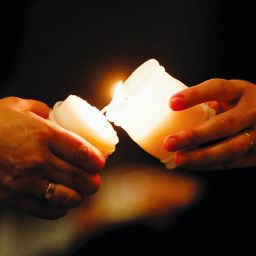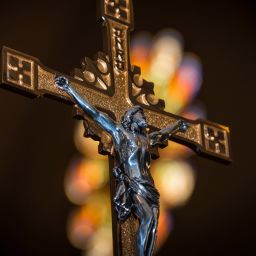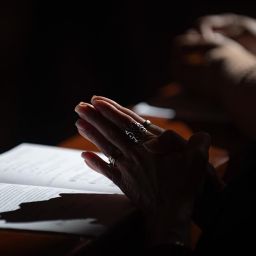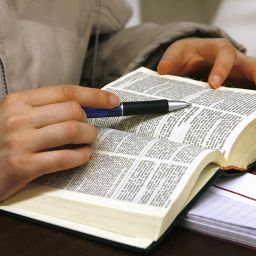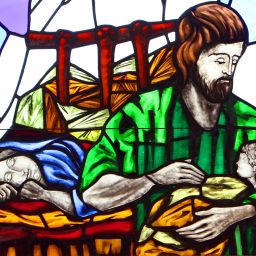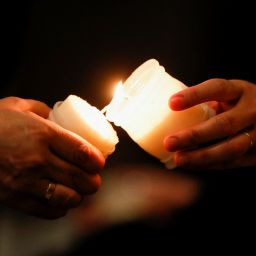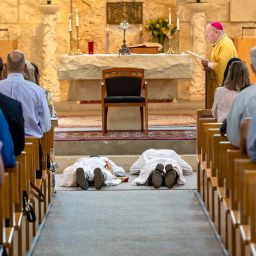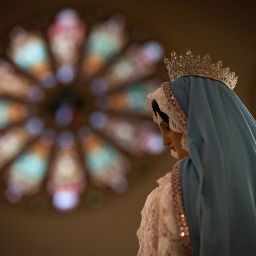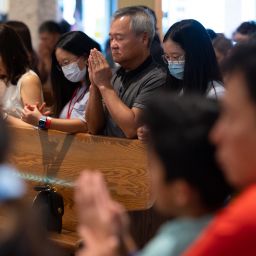
By Father John Bayer
Special to The Texas Catholic
Catholic Schools Week (Jan. 30 to Feb. 5 this year) is a time to reflect on the gift of Catholic education and to support the many men and women who work so hard to offer that education to children throughout the world.
Teaching is a tremendous vocation. Teachers cooperate with parents in the Church to form young people intellectually and morally to know and love God, and to find in him the very special path for their own lives. It is also a demanding vocation, since working with children calls for great personal investment, but the fruits — hearts of friends on fire with love for God and for all things true, beautiful and good — are eternal.
How can we support Catholic schools? We can begin by considering their past, present and future. Some say Catholic education today is at a crossroads, or even in crisis. Statistics from the National Catholic Educational Association show that about 1,400 Catholic schools closed since 2010, while only 261 opened. Catholic schools were once a reliably affordable option, partially because of the many consecrated women and men who staffed them, but now they can often be prohibitively expensive without scholarships. Some governments recognize the contribution of Catholic schools and so include them in funding for education. But in the USA such subsidies are often not granted, because of a strict ideological separation between the state and religion, which it considers to be an exclusively private concern (even though some secular ideologies in public schools call for a quasi-religious commitment of their own). Thankfully, the situation appears to be changing through recent Supreme Court decisions like Espinoza v. Montana (2020). In addition to funding, Catholic schools stand at a crossroads or crisis over the question of their identity. What does it mean to be a Catholic school in our secular and ostensibly pluralistic world?
I think that such challenges as these (and others) ultimately mean it is a great time to be in Catholic education, or simply to be Catholic. For our challenges are part of a larger crisis in American education, and many would argue that resources needed to face this crisis lie within the Catholic tradition. If we could only dive deeply into our own tradition and convince society to let us be ourselves —which ought not be too difficult for it, assuming it is committed to diversity — we might experience a joyful renewal in our schools and thereby serve the world.
American education seems to struggle today to form free and wise people ready to work together in a variety of social and economic spheres for the common good. Often it seems handicapped by small-minded goals that prepare people to subject themselves to mundane nine-to-fives they can’t wait to leave every day, rather than to become liberated human beings able to see the eternal significance of their daily service in the world. Education also seems threatened by narrow ideologies that are colonizing the minds of children, stunting their natural openness to transcendent and integrated visions of reality and what it means to be a human person.
Catholic education can meet these challenges. We are heir to an ancient tradition that has formed innumerable scholars, scientists and saints. To learn about it, I suggest “The Heart of Culture: A Brief History of Western Education” and “Renewing Catholic Schools: How to Regain a Catholic Vision in a Secular Age.” The former book briefly tells the intellectual history of Catholic education and the latter offers a proposal to draw from this tradition today. One of best (and briefest) books I have seen is “The Holy See’s Teaching on Catholic Schools” by Archbishop Miller, the former Secretary of the Congregation for Catholic Education (2003-2007). Miller outlines a vision for Catholic education in five principles. Given the limits of space, I can comment on only the first two: a Catholic school should be inspired by a supernatural vision, and founded on a Christian anthropology. Briefly, that means a school should resist temptations to reduce its ambitions to the mere transmission of information and instead embrace the comprehensive formation of its students. It should see Jesus Christ, the Word made flesh, as the true Teacher of everyone in a school community, students and teachers alike.
Concretely, Catholic schools should form students by helping them integrate their courses into a worldview that is open to all truth, whether natural or supernatural, moral or intellectual. If we want to know the world — and then rejoice over our place in it — we must know the key connecting everything and unlocking the meaning of our personal lives and professions. Jesus is that key. The summit of all Truth – the Word or Rationality underlying every sub-atomic particle and human life – is the Person in whom human beings are elevated to the life of the Trinity, to the joyful life of divine love. Catholic schools will likely come in many kinds, from trade schools to classical schools, but they will all enable their students to see the connections between science, literature, and every other subject, sport, club, and professional possibility. No activity should aim simply to transmit technical expertise or isolated bits of information. Expertise and information are important. But alone they do not enkindle the heart or enlighten the mind. Our world needs a generation to rise from our schools ready to see the beautiful meaning of their personal and professional lives as a participation in the Mystery of Christ, who is working through them to reconcile the world to God.
As you see, teaching is a tremendous vocation. Let’s pray for our students and those who serve them!
Father John Bayer, O. Cist., is a monk at the Cistercian Abbey of Our Lady of Dallas in Irving.

